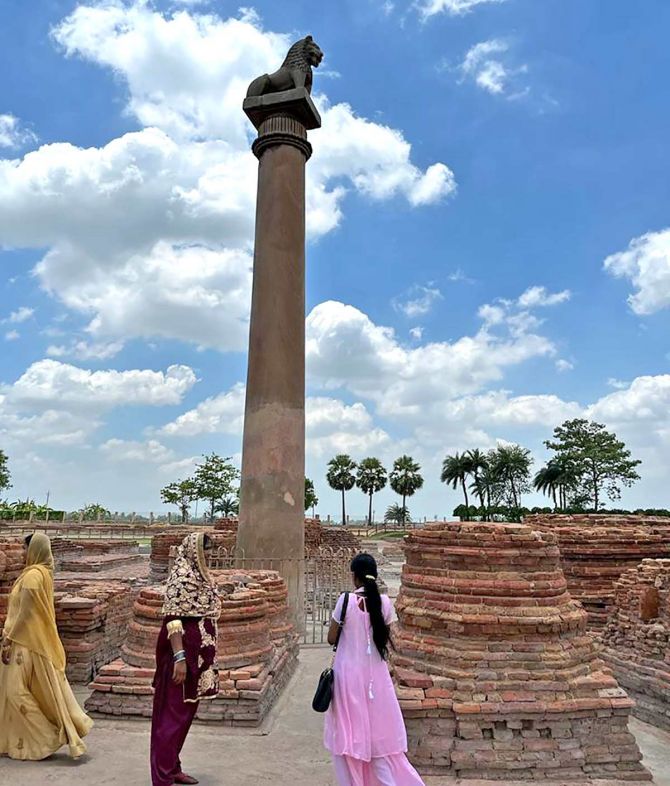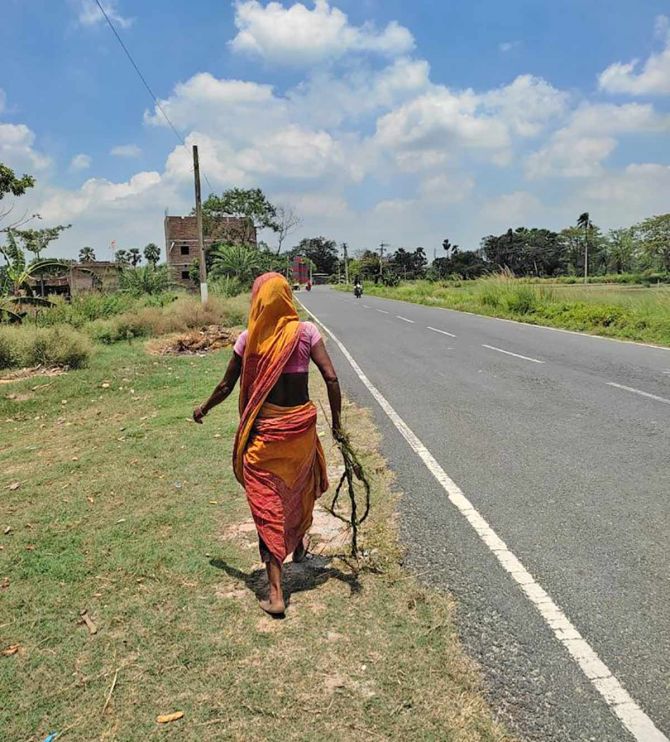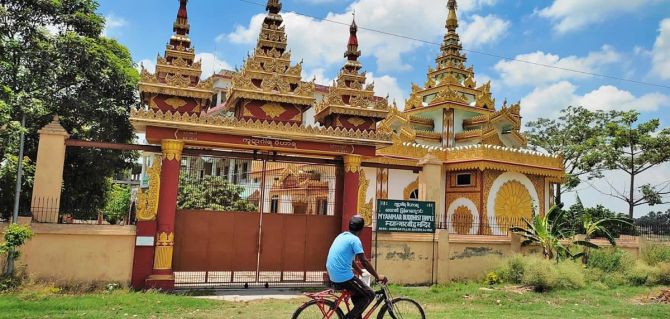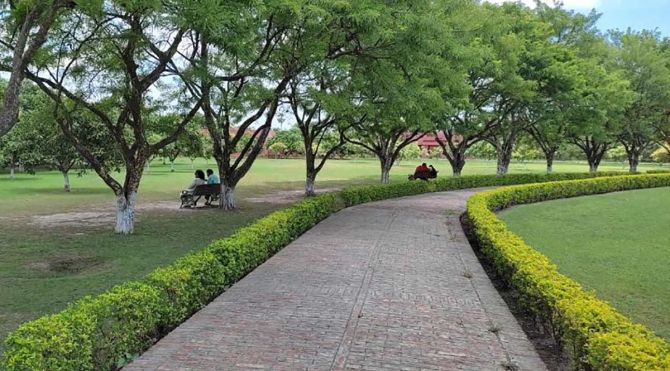The Ashokan Pillar in Kolhua, Bihar, is one of India's best maintained historical sites.

The Ashokan Pillar with a single lion stands gloriously tall, higher than anything as far as the eye can see.
The staff is helpful; the gardens surrounding the ancient relic are lush green, dotted with trees in the hot sun. The parking is in a shady litchi grove. At just Rs 10, you will not find a cooler parking lot for all the money in the world.
With 2-3 cars parked on one side, the other side has 2-3 string charpoys where elderly men take an afternoon siesta. Children sit on a tree branch chatting and laughing.
The idyllic scene is a perfect start to the Ashokan architectural wonder that costs just Rs 25 as ticket fee.

The column is an elegant single piece of polished sandstone 18.3 metres high.
The elegantly crafted seated lion at the top has watched over this landscape for over 2,000 years, withstanding the ravages of many a flood, storm and lightning that this region of Bihar encounters regularly.
The open-mouthed lion with exposed fangs and furrowed brow is majestic, strong and has a gentle elegance. It is one of 19 pillars that still stand today.

Ashoka, the third king of the Mauryan empire, erected the pillars throughout his empire that spread over most of India.
It would take another 2,000 years before so much of India would be incorporated under a single ruler -- the British Raj -- according to historian Sunil Khilnani.
'He wanted to spread his message by moral force and persuasion -- a message symbolised by the lions. He took the message to his people through edicts carved in stone through the length and breadth of India,' Professor Khilnani explained about Ashoka on a BBC Radio podcast about his book Incarnations, which highlights 50 figures that shaped Indian history.

The National Emblem is taken from the four Lions on the Ashokan Pillar in Sarnath. The Lions of Sarnath broke from the pillar and remained buried till they were excavated by the British.
'Ashoka was rediscoverd by the British and went on to become an inspiration to Indian nationalists embodying universal principles of justice, nonviolence and political unity, Professor Khilnani elaborated on the podcast.
'His lions have been part of all Indian lives and his message of moderation and restraint remains in equal parts an admonition and inspiration to Indians today,' Professor Khilnani added.

On the bank of the river Ganga, Vaishali is an ancient town associated with names steeped deep in the Indian consciousness -- Lord Buddha, Lord Mahavira, Ashoka, Amrapali, the Lichchavi rulers [the Railways has a train by that name].
It is also the birth place of Lord Mahavira.
The land is green in patches; the road is a flat ribbon flanked by fields and village homes. Myanmarese and Vietnamese monasteries with ornate golden rooftops sparkle under the melting sun.
These are paths where the Buddha once walked.
The stone plaque at the entrance reveals that the Buddha visited Vaishali several times and spent many rainy seasons here.
This is where he allowed nuns to the Sangha for the first time, announced his approaching nirvana and converted Amrapali from a court dancer to a nun.

The red brick stupa, a graceful mound next to the pillar is surrounded by remains of a monastery and votive stupas, discovered after excavations in the early 20th century.
It is hard to imagine that all this lay buried in the earth for thousands of years.
Alexander Cunningham identified the present site of Vaishali in 1861-1862 on the basis of Chinese records and later confirmed it by undertaking limited excavations. In the 6th century, Vaishali was the capital of the Lichchavi Republic.
A stupa ensconces a part of the Buddha's ashes which was constructed by the Lichchavis.
The Nipponzan Myohoji order of Japan along with the Rajgir Buddha Vihar Society constructed the world peace pagoda in Vaishali.
Lord Buddha's relics are enshrined in the stupa.

The complex in Kolhua that house the Ashokan pillar is a serene patch of land, every speck holding our ancient heritage.
Located less than an hour away from Patna by road, it is a must-see site.
There are very few visitors because of the harsh summer afternoon. Some people sit under the shady trees, watching the sandstone Lion pillar, one of the earliest stone sculptures in India.
The Sunday afternoon of our visit, new wheelchairs had arrived for aged and disabled visitors.
The few make-shift shops outside sell Buddhist prayer bowls, beads, idols of Buddha, wooden toys.
The one thing that is sold more than anything else is the Ashokan Pillar in various sizes -- the symbol of the Indian State.
Feature Presentation: Aslam Hunani/Rediff.com










